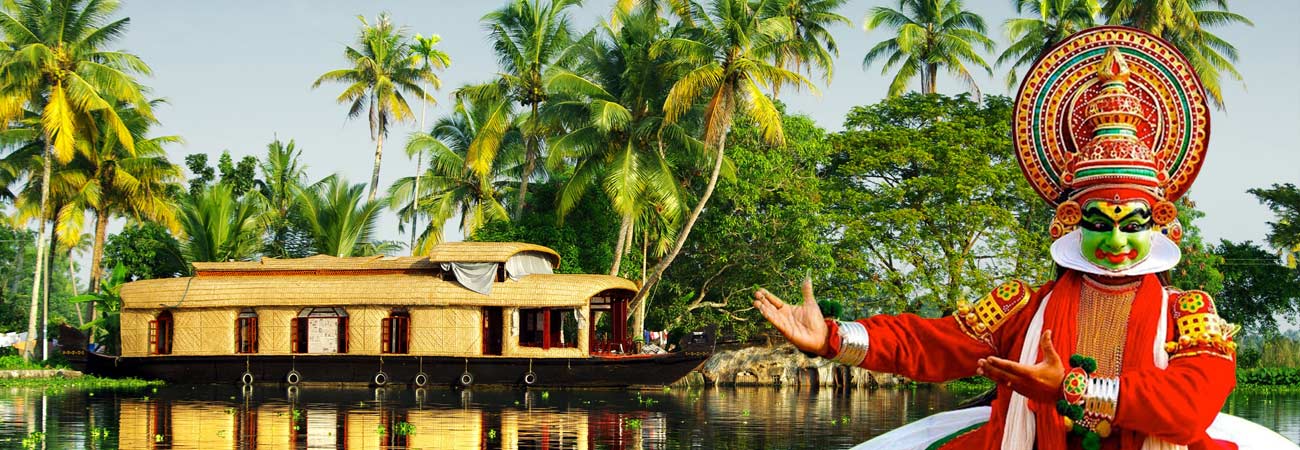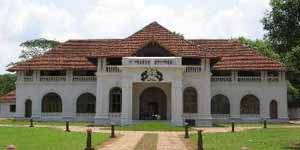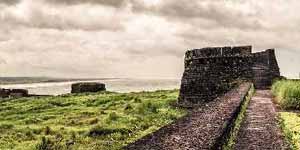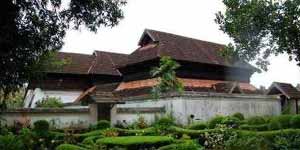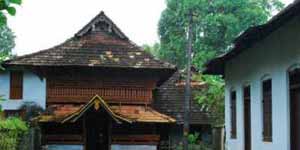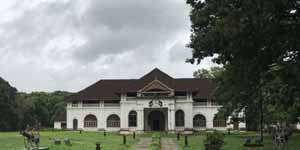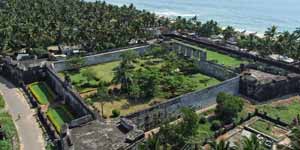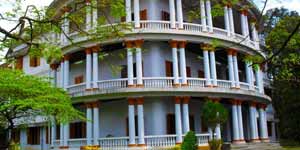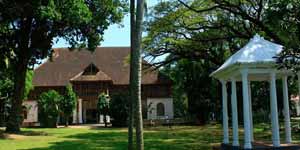
Poonjar Palace
The Poonjar Palace in Meenachil taluk is a glorious testimony to the regal opulence of a bygone era. With the palace walls, is an extra ordinary royal collection of antiques and exquisite furniture which include a palanquin, a thoni carved out of a single piece of wood for ayurvedic massages, huge chandeliers, palm leaf engravings, jewel boxes, a variety of lamps, sculptures of Nataraja (dancing Lord Siva ), grain measures, statues and weapons. A unique couch preserved here is taken out once a year for ritualistic purposes. Near the palace is an amazing replica of the Madurai Meenakshi Temple. The walls of this temple have sculptures with war fare stories from the Puranas (the legends of ancient India ). However the most fascinating thing here is the Chuttuvilakku (row of lamps) carved out on the stonewalls of the Sastha Temple nearby. Such rocks cut lamps are rare in India.
History of the Poonjar Palace
The palace has been built by the Poonjar kings who created the Poonjar kingdom. They were linked with the royal family in Travancore. The creator of Poonjar dynasty was Kulasekara Perumal whose mother was Chera princess. During the civil war of 1152 AD, the Poonjar dynasty reallocated from Madurai and the king carried the three deities along with him and set them up in the Meenakshi temple. In this present era, the palace is serving as a museum. These three deities were the Kuladevata of the Poonjar dynasty.
The antique pieces furniture that is kept there had been crafted out of rosewood and sandalwood, the reason why lots of visitors are attracted here. The main attraction of the palace is the museum that preserves lots of antique pieces. The heritage has been bounded by massive and high walls. The palace is being looked after by the archaeology department of Kerala and is regarded as a historic monument. Visiting the palace would make you feel the essence of past glory. The unique attraction of the palace that has increased the beauty has been detailed here:
- The sculpture of the dancing Shiva or the Nataraja
- The ancient weapons used by the rulers at that time
- A traditional bed that was being used for natural Ayurveda treatment known as Droni
- Valuable jewel boxes
- Lamps cut out of rocks
- Engravings from Palm leaf
- Chandeliers and palanquins
- Grain measurers
- A boat made with a single piece of wood
- A special conch which is taken out once in a year for performing rituals
These things in the museum are the main reasons for people wanting to visit the Poonjar palace. But it has been heard that visitors are not allowed all the time and they need to take the permission of the department those who are looking after the property. There is also a temple which is just a duplicate of the Meenakshi temple in Madurai. The sculptures crafted on the walls narrate the story of Puranas. There is a row of lamps that are equally fascinating. Another temple lies nearby called Sastha temple which is truly interesting with ancient carvings.
Best Time To visit Poonjar palace
Poonjar is a year-round destination and as a result, it can be visited every time at some point of the yr as a consequence of its satisfactory climate and luxuriant surroundings. However, in case you desire to skip the summers of Kerala, then the effective time to go to Poonjar is from September till the end of March. All through the length, the splendor of this least-explored hill station is at its height
Monuments in Kerala
Monuments in Kerala is one of the most visited tourist destinations in India. The beautiful state is not only replete with natural beauty but it is the land of abundant historical attractions. During your tour to Kerala, you can explore some of the most famous historical monuments of Kerala that let you know the glorious past history of the state. The coastal state is home to diverse landmarks, architecture, and culture. The royal dynasties of Kerala, colonial Portuguese, Jews, Dutch and British have inhabited the region and have inspired many architectural marvels. Magnificent forts, palaces, architectural monuments represent the ruling dynasties and cultures that existed here. The combined history of the state is a treasure. Every monument is an insight into the charming history of God’s Own Country.

